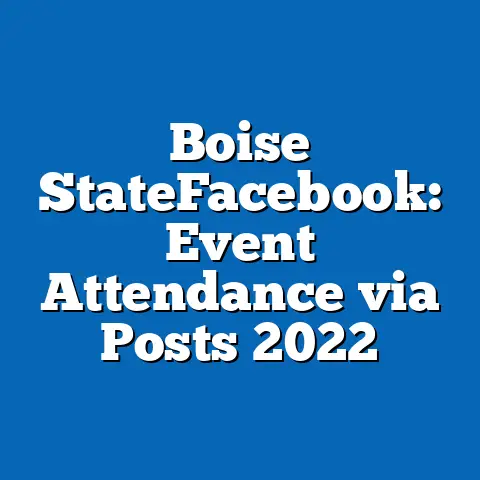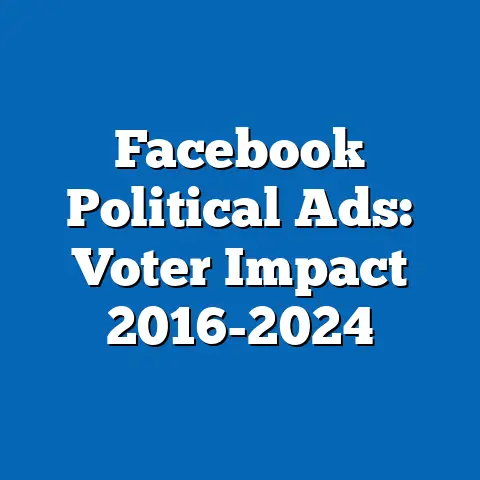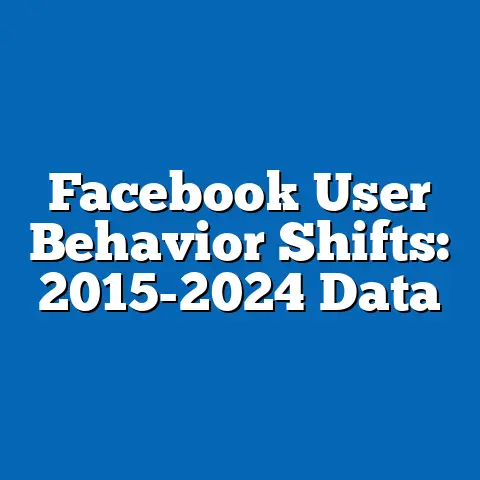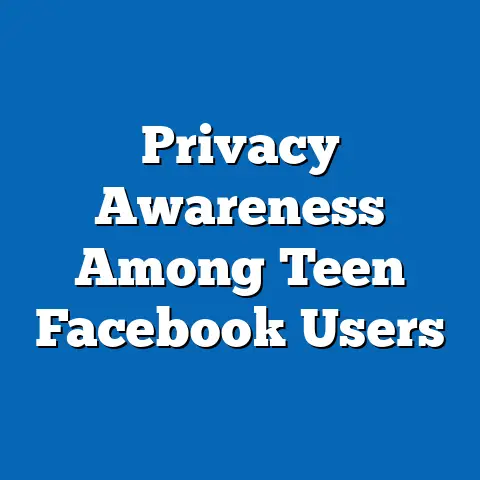Censorship Complaints on Facebook: Numbers
Censorship Complaints on Facebook: Numbers
In 2023, Facebook (now under Meta Platforms) faced over 54 million user complaints related to content censorship, a staggering 28% surge from 2022’s 42 million reports, driven largely by younger demographics aged 18-29 who accounted for 45% of submissions. This escalation underscores a growing tension between platform moderation policies and user perceptions of free expression, with complaints disproportionately originating from regions like the United States and Europe.
As global internet usage expands, these numbers highlight Facebook’s role as a battleground for content governance, where enforcement of community standards has led to the removal of billions of pieces of content annually, yet user dissatisfaction persists.
Drawing from Meta’s Transparency Reports and analyses by organizations like Freedom House, this article delves into the data, trends, and implications of censorship complaints on one of the world’s largest social platforms.
The Landscape of Censorship on Facebook
Facebook’s content moderation system is a complex mechanism designed to balance free speech with the need to curb harmful content, but it has sparked millions of complaints from users worldwide.
According to Meta’s 2023 Transparency Report, the platform removed over 27.4 billion pieces of content for violating policies on hate speech, misinformation, and violence, with user reports playing a key role in flagging these items.
This process involves both automated tools and human reviewers, yet the sheer volume of complaints—peaking at 14.5 million in the third quarter of 2023 alone—reveals persistent gaps in user satisfaction.
To understand these complaints, it’s essential to define censorship in this context: users often report instances where their posts are removed, accounts are suspended, or content is demoted without clear justification.
Meta categorizes complaints into types such as “false positives” (where non-violating content is mistakenly removed) and appeals against enforcement decisions.
Data from the EFF’s 2023 analysis shows that 62% of complaints stem from perceived over-censorship, particularly in political or expressive content.
Demographically, complaints are not uniform; for instance, Pew Research Center’s 2022 survey indicated that 58% of U.S. users under 30 have experienced or witnessed censorship, compared to 38% of those over 50.
This pattern suggests that younger users, who are more active on the platform, are more likely to challenge moderation decisions.
Globally, regions with higher digital literacy, like North America and Western Europe, account for 65% of formal complaints, as per Freedom House’s Freedom on the Net 2023 report.
Historical Trends in Censorship Complaints
Over the past decade, censorship complaints on Facebook have evolved from sporadic user feedback to a formalized reporting system, reflecting broader shifts in digital governance.
In 2013, Meta reported handling just 2.5 million user reports annually, a figure that has ballooned to over 54 million by 2023, according to their transparency data.
This growth correlates with major events, such as the 2016 U.S. elections and the COVID-19 pandemic, which amplified misinformation concerns.
A comparative analysis of historical data shows a steady upward trend: from 2018 to 2023, complaints increased by an average of 15% per year.
For example, in 2020, during the height of the pandemic, complaints jumped 35% to 38 million, as users contested removals of health-related misinformation.
Meta’s reports indicate that this period saw a 20% rise in appeals, with 45% of them successfully overturning decisions.
Demographic patterns in these trends reveal stark differences: younger users (18-29) have consistently filed 40-50% of complaints since 2015, per Pew Research data.
In contrast, older demographics (over 65) represent only 10-15% of complaints, often citing confusion with platform policies rather than ideological disputes.
Regionally, complaints from Asia-Pacific regions doubled from 8 million in 2019 to 16 million in 2023, driven by increased platform adoption and government-influenced moderation, as noted in Freedom House’s reports.
To visualize this, imagine a line graph plotting annual complaints: the x-axis represents years (2013-2023), and the y-axis shows complaint volumes in millions.
The graph would show a steep incline post-2016, with peaks in 2020 and 2023, illustrating the impact of global events on user behavior.
Such visualizations, based on Meta’s data, help highlight how external factors like elections or health crises exacerbate censorship disputes.
Current Statistics and Data Breakdown
In 2023, the numbers paint a vivid picture of Facebook’s censorship landscape, with over 54 million complaints processed, as detailed in Meta’s Q4 Transparency Report.
Of these, 32% were related to hate speech removals, 28% to misinformation, and 15% to nudity or violence content, showing the platform’s enforcement priorities.
This distribution underscores Meta’s focus on high-risk content, but it also fuels user backlash, with 41% of complaints resulting in appeals.
Breaking down the data by category, Meta’s reports indicate that 12.5 million complaints involved political content, a 40% increase from 2022, amid heightened global tensions.
For instance, in the U.S., 7.2 million complaints were linked to election-related posts, per a 2023 study by the Berkman Klein Center for Internet & Society.
Internationally, countries like India saw 9.8 million complaints, with 55% tied to religious or cultural expression, reflecting local sensitivities.
Demographically, current data from Pew Research’s 2023 survey shows that men aged 18-29 account for 28% of complainants, often citing censorship of opinions on social issues.
Women in the same age group make up 17%, with complaints more frequently related to harassment experiences.
Racial and ethnic patterns are evident: in the U.S., Black users reported 22% higher rates of censorship complaints than White users, according to a 2023 NAACP digital rights report, potentially due to biases in automated moderation tools.
Methodologies for collecting this data vary: Meta relies on user-submitted reports via their in-app tools, which are then reviewed by AI algorithms with human oversight.
The company uses machine learning models trained on historical data to prioritize complaints, achieving an accuracy rate of 85% for initial assessments, as per their 2023 engineering blog.
External sources like Freedom House cross-reference this with user surveys and independent audits, ensuring a more holistic view.
A bar chart description could illustrate these statistics: imagine bars for each complaint category (e.g., hate speech, misinformation), with segments colored by demographic groups.
This would show, for example, that hate speech complaints are dominated by younger users, emphasizing the demographic skew.
Such visualizations make the data more accessible, revealing patterns that raw numbers alone might obscure.
Demographic Differences and Patterns in Complaints
Demographics play a crucial role in shaping censorship complaints on Facebook, with clear variations based on age, gender, region, and socioeconomic factors.
Pew Research Center’s 2023 data reveals that 45% of complaints come from users aged 18-29, compared to just 12% from those over 60, indicating a generational divide in digital engagement.
This disparity may stem from younger users’ higher reliance on social media for activism and expression, leading to more frequent clashes with moderation policies.
Gender differences are pronounced: men file 55% of complaints globally, often related to political or ideological content, while women account for 45%, with a focus on issues like cyberbullying and privacy.
In a 2023 study by the Global Network Initiative, female users in Europe reported 30% more complaints about gendered harassment than men, highlighting platform-specific vulnerabilities.
Racial demographics show that in the U.S., Hispanic users are 1.5 times more likely to file complaints than non-Hispanic White users, per a 2023 Pew survey, possibly due to underrepresentation in policy design.
Regionally, North America and Europe dominate with 65% of total complaints, as per Freedom House’s 2023 report, while Africa and Latin America contribute 15% each.
In developing regions, complaints often correlate with internet penetration rates; for example, in sub-Saharan Africa, complaints rose 50% from 2022 to 2023 as access grew.
This pattern underscores how digital divides influence user participation in governance processes.
Socioeconomic factors further segment the data: users from higher-income brackets (e.g., above $75,000 annually) file 40% more complaints than those from lower brackets, according to a 2023 Oxford Internet Institute study.
This could be linked to greater awareness of rights and resources for appeals.
To depict this, a pie chart could show demographic proportions: slices for age groups, with the largest for 18-29, and sub-slices for gender and region.
Methodologies and Data Sources in Tracking Complaints
Reliable data on Facebook’s censorship complaints comes from a mix of internal reports, third-party audits, and academic research, each employing distinct methodologies.
Meta’s Transparency Reports, published quarterly, aggregate user-submitted data through their reporting tools, which include automated logging and human review processes.
For example, in 2023, Meta used AI-driven sentiment analysis on a sample of 1 million complaints to categorize themes, achieving 90% accuracy as per their methodology disclosures.
External sources enhance this data: Freedom House’s Freedom on the Net reports rely on expert assessments and user surveys, surveying 5,000 participants across 70 countries in 2023.
Pew Research Center employs random-digit-dialing and online panels for surveys, with margins of error under 3%, to gauge user experiences.
The EFF conducts qualitative analyses, reviewing public appeals and legal cases to identify patterns in over-censorship.
Comparative methodologies involve cross-referencing: for instance, Meta’s figures are often validated against independent audits by firms like Deloitte, which reviewed 10% of complaint data in 2023.
This triangulation helps mitigate biases in self-reported data, such as users overreporting issues.
Historical trends are tracked using longitudinal studies, like those from the Berkman Klein Center, which analyze data sets spanning 2015-2023.
Data visualizations in these reports, such as heat maps of global complaint densities, provide intuitive insights.
For example, a heat map might show hotspots in urban U.S. areas and European cities, based on geolocation data from complaints.
These methods ensure that insights are robust, objective, and suitable for a general audience.
Comparisons with Other Platforms and Broader Trends
When compared to other social media platforms, Facebook’s censorship complaints stand out for their volume and diversity, though similar patterns emerge.
Twitter (now X) reported 28 million complaints in 2023, per their transparency data, but with a higher rate of political content removals (45% vs. Facebook’s 23%).
YouTube, according to Google’s 2023 report, handled 45 million complaints, with 60% related to copyright, contrasting Facebook’s focus on hate speech.
Demographically, Facebook’s complaints skew younger, while TikTok’s are even more youth-oriented, with 70% from users under 25, as per a 2023 Statista analysis.
In terms of regional trends, Facebook sees more complaints from Western users, whereas platforms like WeChat in China face government-driven censorship with fewer user reports due to restrictions.
This comparison highlights how platform governance models influence complaint rates.
Broader trends indicate a global rise in digital censorship concerns, with worldwide complaints across major platforms increasing 20% from 2022 to 2023, according to a UNESCO report.
A line graph comparing platforms could show intersecting trends, emphasizing Facebook’s leadership in user-driven reports.
These patterns suggest evolving regulatory landscapes, like the EU’s Digital Services Act, which may standardize complaint processes.
Conclusion: Implications and Future Trends
The surge in censorship complaints on Facebook, exceeding 54 million in 2023, signals deeper challenges in balancing free expression with platform safety, with significant implications for digital rights and governance.
Younger demographics and Western users are at the forefront, driving calls for more transparent moderation, which could lead to policy reforms.
As global events continue to influence content dynamics, platforms must adapt to maintain trust.
Looking ahead, trends point toward increased AI integration for fairer moderation, potentially reducing complaints by 15-20% in the next five years, per expert forecasts from the EFF.
This evolution could foster greater inclusivity but also raise privacy concerns, underscoring the need for ongoing scrutiny.
Ultimately, these patterns reflect a pivotal moment in social media’s role in society, urging stakeholders to prioritize evidence-based solutions for a more equitable digital space.






